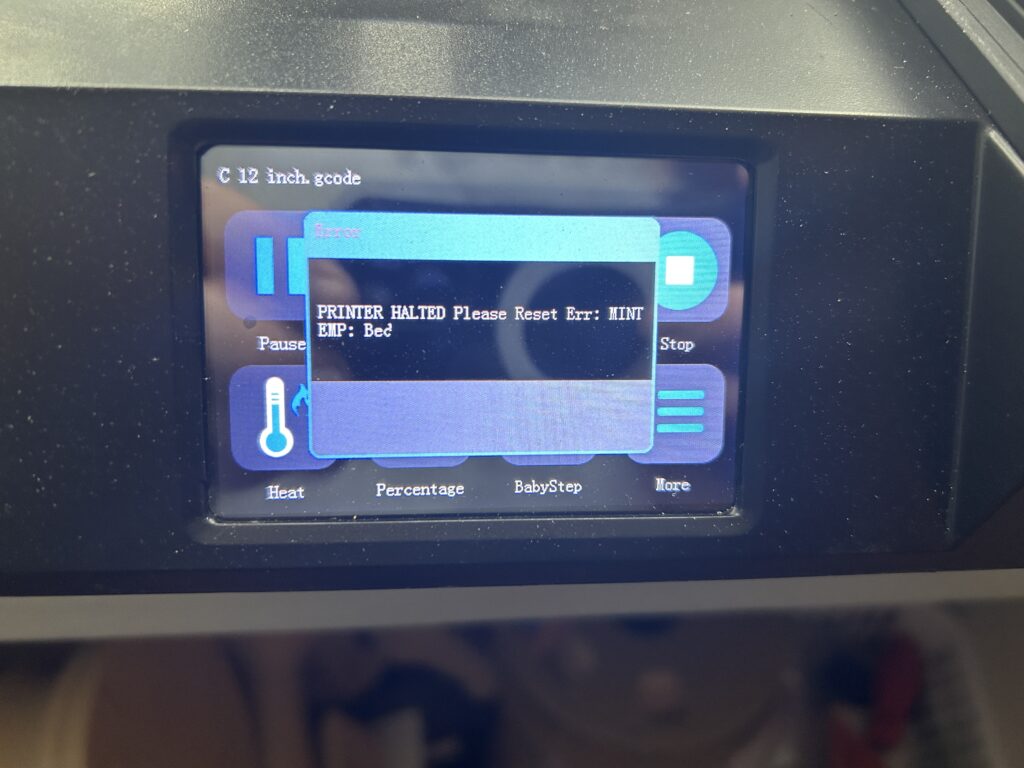The world of 3D printing is not without its mishaps. Failed or unwanted prints are common, but they don’t have to go to waste. With the use of silicone molds, you can recycle these prints by melting them down and creating new, useful items. This not only reduces waste but also adds an exciting dimension to 3D printing. Let’s explore some silicone molds that can turn your messed-up prints into practical objects.

Kitchen Utensils
Silicone molds for kitchen utensils like spatulas, spoon rests, or measuring cups can be incredibly useful. These items are always in demand and can withstand the rigors of daily kitchen use. By recycling your old prints into these items, you not only get practical kitchen tools but also add a personal touch to your cooking space.
Desk Organizers
Desk organizers are another great option. Molds for pen holders, paperclip trays, or even smartphone stands can help keep your workspace tidy and organized. These items are simple yet highly functional, making them perfect candidates for recycling old 3D prints.
Plant Pots
Silicone molds for plant pots are perfect for garden enthusiasts. These can range from small pots suitable for succulents to larger ones for herbs or flowers. Not only do they serve a practical purpose, but they also add a unique, personalized touch to your home or garden.
Coasters
Coasters are small, easy to make, and always useful. Silicone molds for coasters come in various shapes and sizes, allowing you to create custom designs that can be both functional and decorative.
Wall Hooks
Wall hooks are simple yet incredibly useful in any household. Silicone molds for wall hooks can help you create sturdy and durable hooks perfect for hanging coats, bags, or even kitchen utensils.
Cable Holders
In our tech-driven world, cable holders have become a necessity. Silicone molds for cable holders or organizers can help keep your charging cables, earphones, and other wires untangled and easily accessible.
Soap Dishes
Soap dishes are a practical addition to any bathroom. Silicone molds for soap dishes can help you create custom designs that match your bathroom décor while serving a functional purpose.
Keychains
Keychains are simple, easy-to-make items that are always useful. Silicone molds for keychains allow for a variety of designs and sizes, making them a fun and practical way to recycle old 3D prints.
Jewelry
Silicone molds for jewelry items like pendants, bracelets, or earrings can be a creative way to recycle your prints. This not only gives you unique fashion accessories but also makes for great personalized gifts.
Custom Light Switch Covers
Custom light switch covers can add a unique touch to your home. Silicone molds for these covers allow you to create designs that can match or accent your home décor.
Game Pieces
For board game enthusiasts, creating custom game pieces can be a fun and unique use of old 3D prints. Silicone molds for chess pieces, tokens, or other game components can add a personal touch to your favorite games.
In conclusion, the possibilities are endless when it comes to recycling old 3D prints using silicone molds. From practical household items to personalized accessories, these molds offer a creative and environmentally friendly way to give your failed or unwanted prints a new lease on life.
Melting Plastic into Silicone Molds: A Step-by-Step Guide
Recycling failed 3D prints by melting them into silicone molds is a creative and eco-friendly process. Here’s a step-by-step guide on how to do it:
Step 1: Gather Your Materials
- Old 3D Prints: Collect your failed or unwanted 3D printed objects.
- Silicone Molds: Choose molds based on the items you want to create.
- Heat Source: An oven is commonly used, but for some plastics, a heat gun or double boiler might be more appropriate.
- Safety Gear: Wear protective gloves and eyewear, and work in a well-ventilated area.
Step 2: Prepare the Plastic
- Clean the Prints: Remove any dust or debris from your 3D prints.
- Cut or Break into Smaller Pieces: This ensures even melting and easier molding.
Step 3: Melting the Plastic
- Preheat the Oven: If using an oven, preheat it to the appropriate temperature for the type of plastic. PLA, for example, melts at around 160-180°C (320-356°F).
- Place Plastic in Mold: Arrange the plastic pieces evenly in the silicone mold.
- Melt the Plastic: Place the mold in the oven. Monitor the process closely as melting times can vary based on the type and amount of plastic.
Step 4: Cooling and Demolding
- Cool Down: Once the plastic has completely melted and filled the mold, allow it to cool. This could take several hours.
- Remove from Mold: Once cooled, gently flex the silicone mold to release the new item.
Step 5: Finishing Touches
- Trim and Sand: You may need to trim excess plastic or sand rough edges for a smooth finish.
- Cleaning: Clean the newly formed item to remove any residues.
Safety and Tips
- Know Your Plastic: Different plastics have different melting points and properties. Make sure you know what type of plastic your prints are made of (like PLA, ABS, etc.) and research the appropriate melting temperatures and methods.
- Ventilation: Melting plastic can release fumes. Ensure good ventilation or consider doing it outside.
- Test First: If you’re new to this, start with a small test to understand how your plastic behaves when melted.
- Silicone Mold Quality: Use high-quality silicone molds that can withstand high temperatures.
By following these steps, you can turn your failed 3D prints into new, useful items, giving them a second life and reducing waste. This process not only benefits the environment but also adds an element of creativity and personalization to your 3D printing projects.
- Phone Stands
- Picture Frames
- Bottle Openers
- Garden Markers
- Drawer Knobs
- Bookends
- Lamp Bases
- Trinket Boxes
- Coat Hangers
- Fridge Magnets
- Wine Glass Charms
- Candle Holders
- Shot Glasses
- Vases
- Paperweights
- Business Card Holders
- Toothbrush Holders
- Utensil Handles
- Door Stops
- Shoe Horns
- Luggage Tags
- Bookmark Ends
- Bath Toy Shapes
- Cookie Cutters
- Ice Cube Trays
- Jewelry Boxes
- Clock Faces
- Soap Bars
- Guitar Picks
- Dice
- Key Racks
- Laptop Stands
- Table Coasters
- Bicycle Handle Grips
- Gaming Controller Stands
- Pencil Toppers
- Flower Pots
- Serving Trays
- Money Clips
- Eyeglass Frames
- Salt and Pepper Shakers
- Light Pulls
- Ornaments
- Pet ID Tags
- Headphone Wraps
- Flash Drive Cases
- Golf Ball Markers
- Puzzle Pieces
- Cup Holders
- Napkin Rings
These ideas can be adapted and customized based on the type of plastic used, the size of the molds, and the specific needs or interests of the user. The possibilities are virtually endless, allowing for a wide range of creative and practical applications.
As an Amazon Associate we earn from qualifying purchases through some links in our articles.




